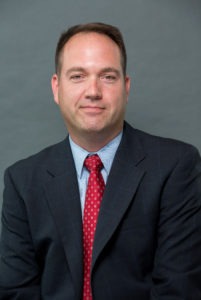Intergenerational relationships: The other is us
At the LeadingAge conference in October, Nobel Prize winner Elie Wiesel spoke about loneliness. He said that it is every person’s responsibility to be present for others, and emphasized that it is incumbent on us to recognize that despite differences among people, we must fight distrust and suspiciousness because “the other” is one of us, no matter the superficial or even philosophical differences. He emphasized that intergenerational involvement is crucial to both old and young, and it reduces suspicion and mistrust, replacing it with understanding, friendship and a reduction in loneliness.
Of course, in our work we have often tried to bring young people into our communities on the assumption that youth and vibrancy are good for the elders-but how can this be done effectively so that relationships are built and the young are not simply visiting for a special event? And what do the youth gain from our efforts?
LESSONS ON AGING
Part of our mission at the Erickson School is to make college students aware of aging not just as a career but as an era of life-an era in which growth and development continue, despite appearances to the contrary or the stereotyped impressions they may already have received from our cultural ageism. Consistent with Weisel’s message, we feel that intergenerational relationships can be magical and are necessary for a just society. The challenge is how to foster activities that may lead to meaningful relationships. Families are spread out-now more than ever geography prohibits people having intergenerational experiences in their own families-so our efforts to create opportunity for this contact are increasingly more important.
On campus, we have designed a class that brings first-year students together with an elder partner to explore the theme of transitions in life. This course grew out of UMBC’s award-winning Digital Stories project. A digital story is described by the Center for Digital Storytelling (www.storycenter.org) as “a short, first person video-narrative created by combining recorded voice, still and moving images, and music or other sounds.”
Participants record a three- to five-minute script and then work together using photographs, drawings and other images to illustrate the recorded narration. The format requires a fine focus and many of the stories are very compelling. By sharing this experience, partners learn about each other and can reflect on what they have in common and how their transitions may have been similar or different. Doing the project together allows a relationship to develop over time and become a meaningful experience for both partners.
SHARING TRANSITIONS
By building these relationships, students and elders can see the resilience in each other’s lives, and it may surprise both groups that in dealing with times of transition, the students have shown resilience as well. A surprisingly large number of the students’ stories, too, are about difficult times and how they overcame them. When partners share their stories they learn that at every stage of life people choose or are confronted with challenges that require resilience.
Transitions are times when people’s preferred view can be most easily disconfirmed or solidified. Focusing on the transitions in their lives could reveal common themes, and remind them of the strength they showed in handling a possibly difficult time. Both college freshmen and their senior partners from the community went through a transition when they moved to this new stage of life. We wanted to see how sharing stories of transition would lead to wisdom.
Wisdom is often characterized as a late-life acquisition. For many older people, sharing what they have learned in their lives is an enriching experience, and, says Reb Zalman Shechter-Shalomi in his book
From Ageing to Sageing,
1 is a way to make the world better for the next generation. But this wisdom is acquired over a lifetime. The student/senior partnership shows each person that from each transition in life, the wisdom is accumulating. For the elders, the opportunity to have a meaningful relationship with a respectful and interested young person helps to dispel stereotypes of callow youth.
Having children come in to perform or do service projects is wonderful. But meaningful relationships with young people benefit both parties and are an important part of residential life. Creating digital stories gives people a project and a product they can share with others. These types of programs go beyond holiday performances where elders are passive members of the audience, and prove that members of different generations are not “the other” but, as Weisel says, that the other is us.
Judah L. Ronch, PhD, is the Dean of and a professor at the Erickson School, University of Maryland-Baltimore County, which offers undergraduate and Master’s degrees in Management of Aging Services as well as online and live Executive Education programs and customized industry training. He can be reached at
References
- Shechter-Shalomi Z Miller R. 1997 From Ageing to Sageing: A profound new vision of aging. New York:Grand Central Publishing
Long-Term Living 2011 December;60(12):12-13
Related Articles
Topics: Advocacy , Articles , Leadership











